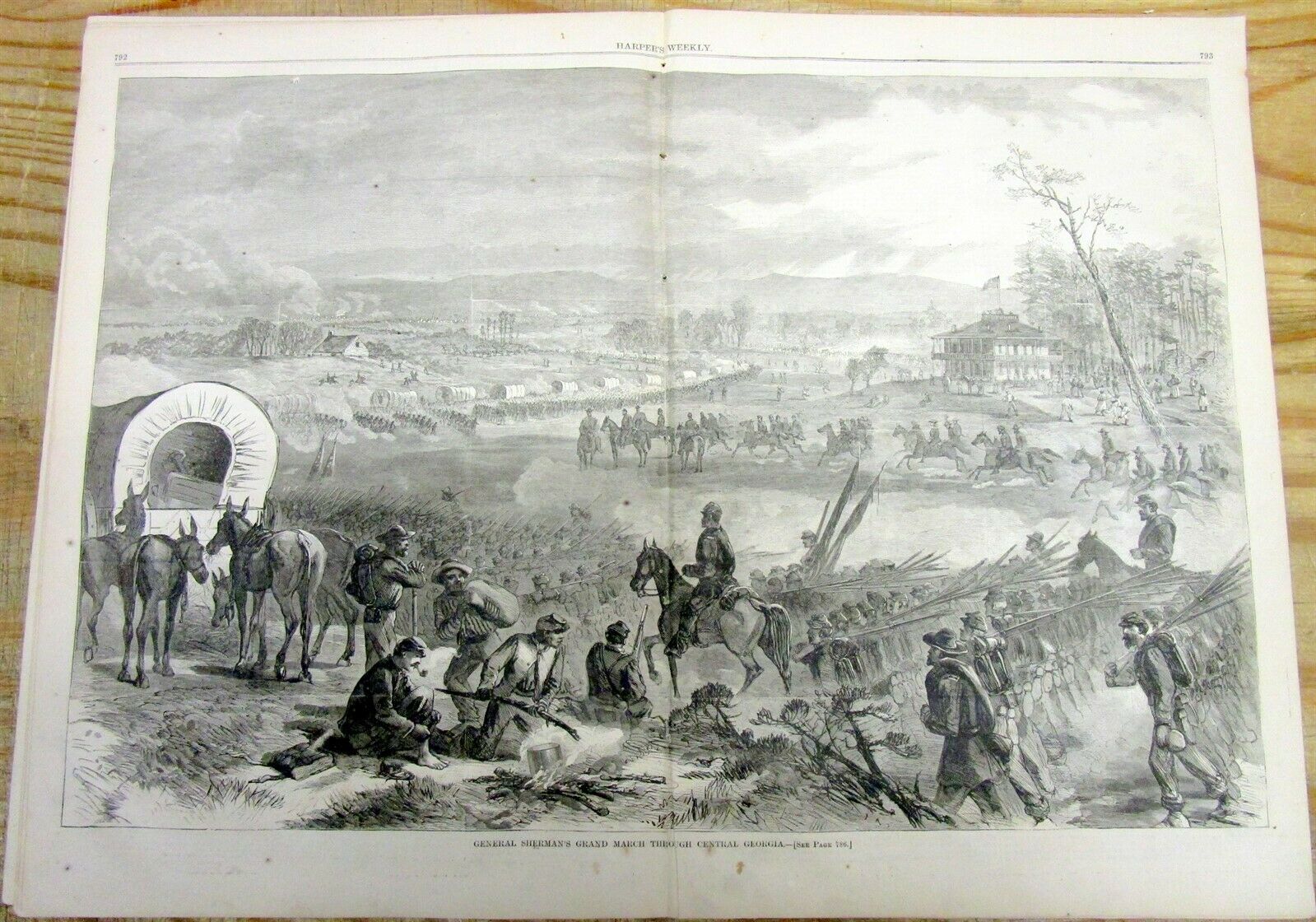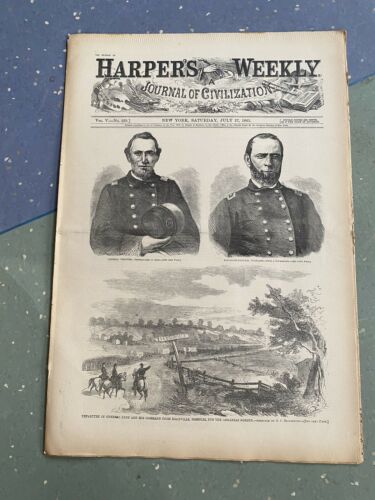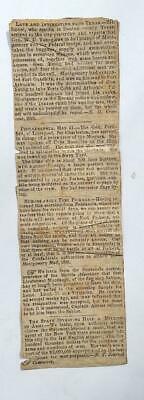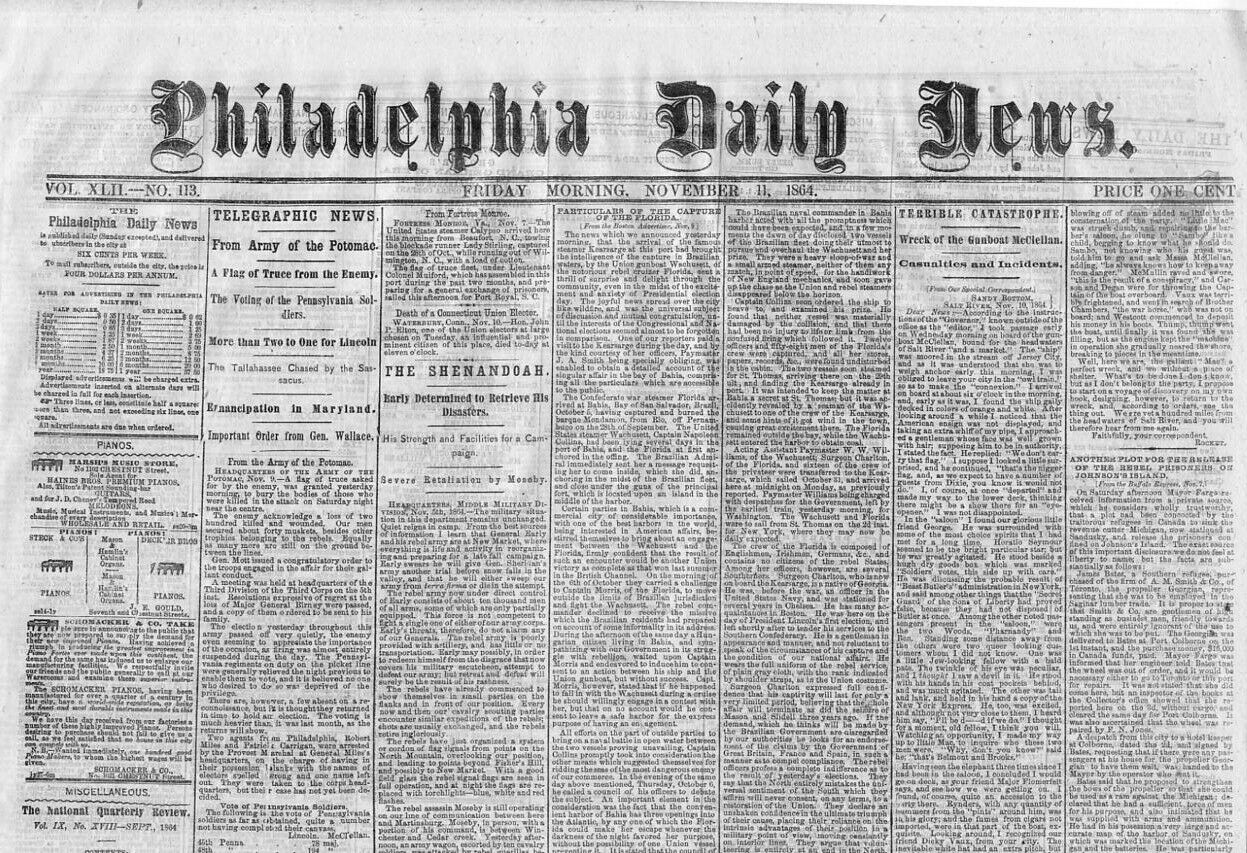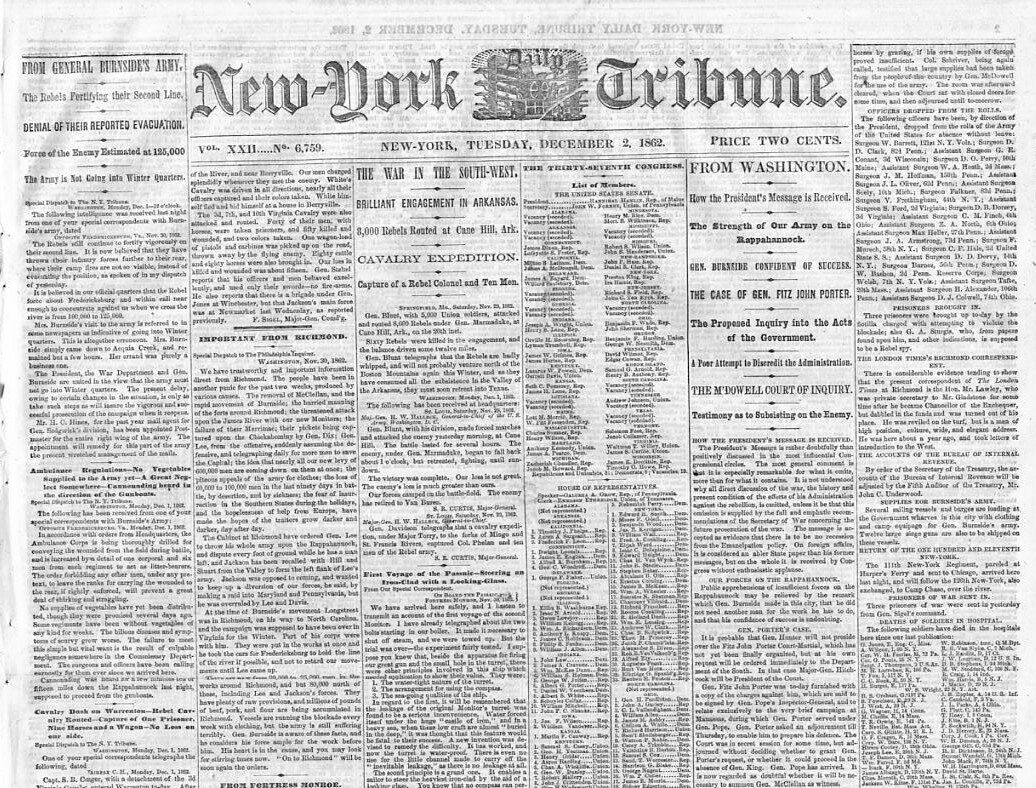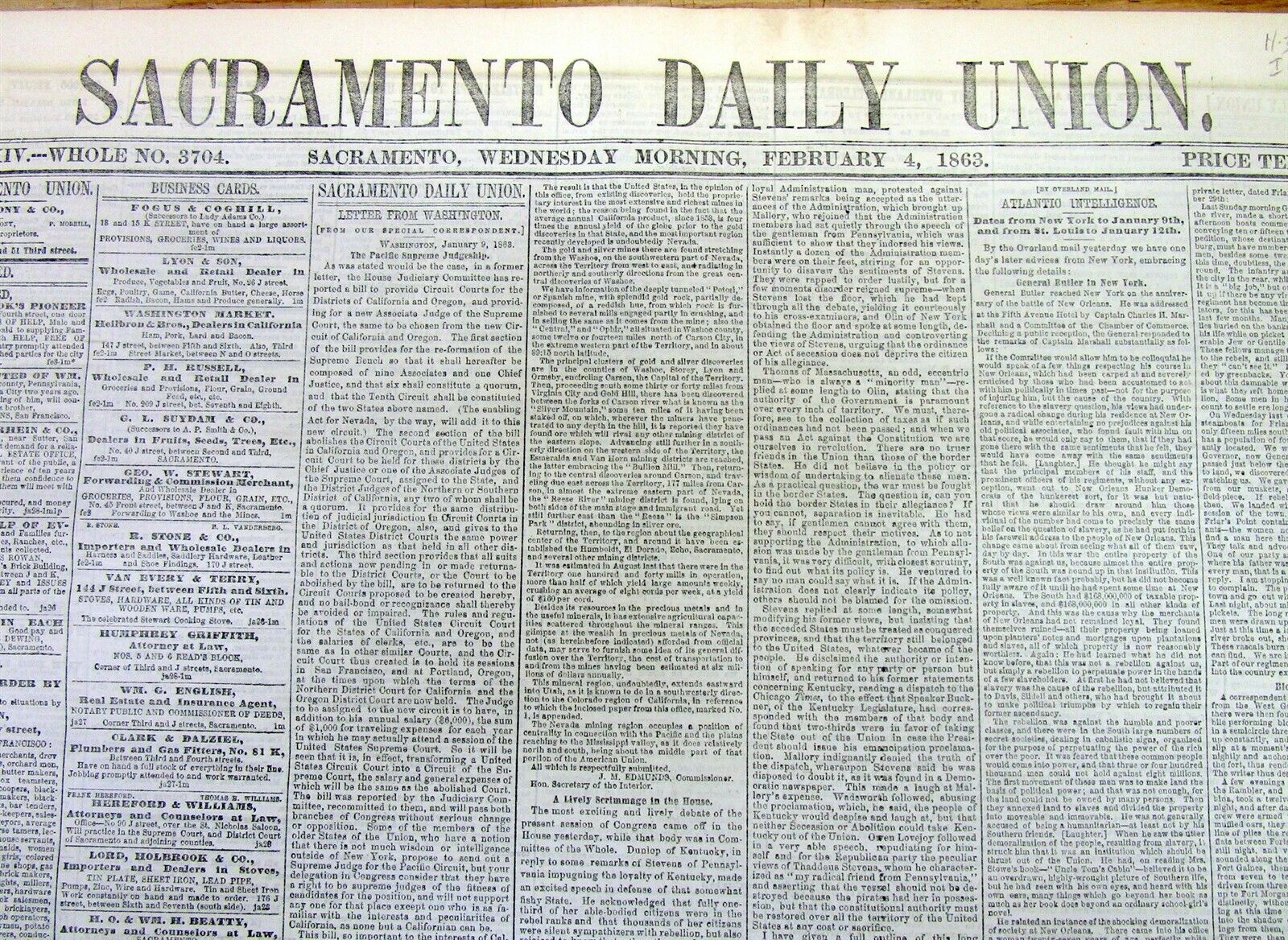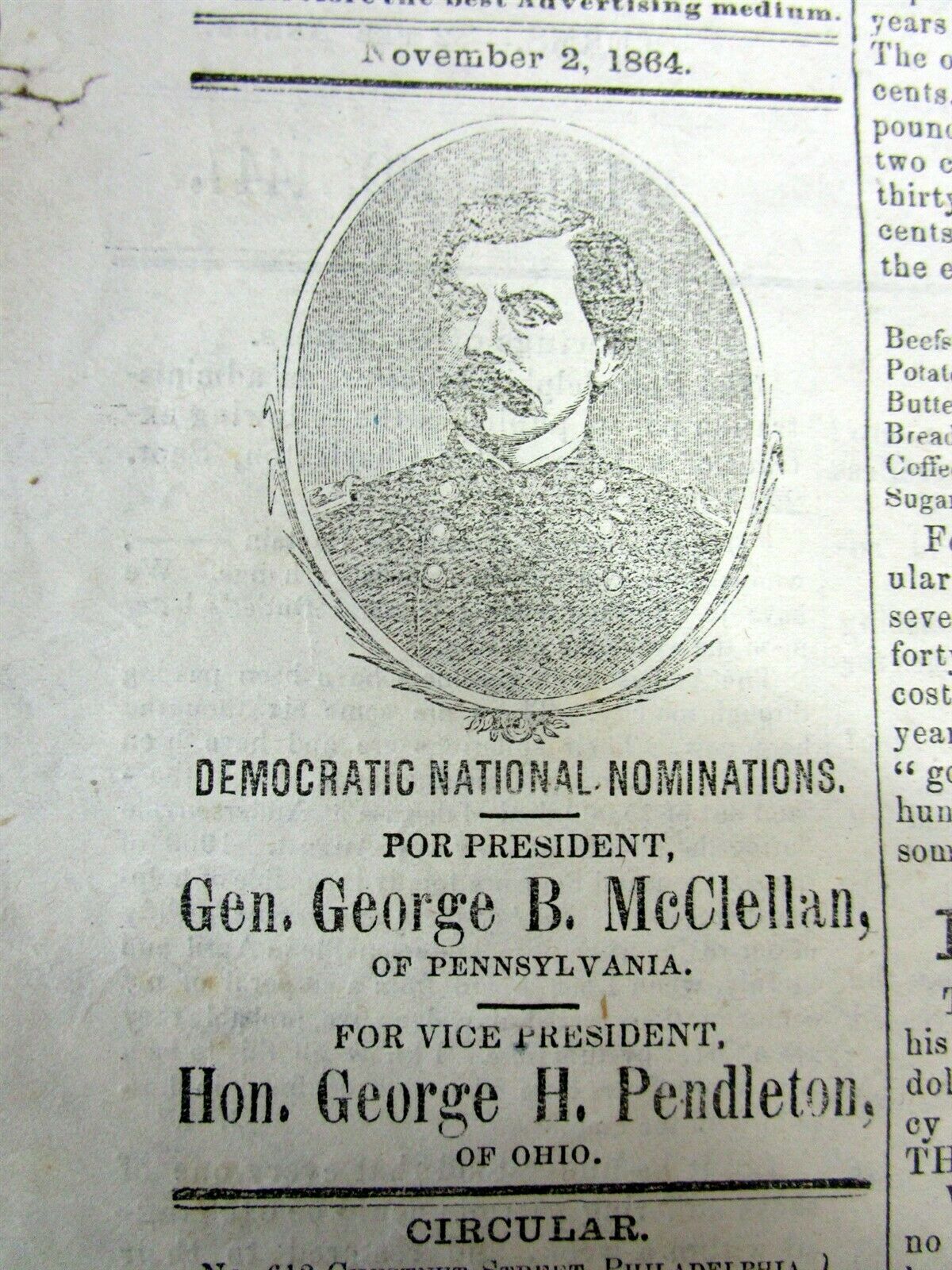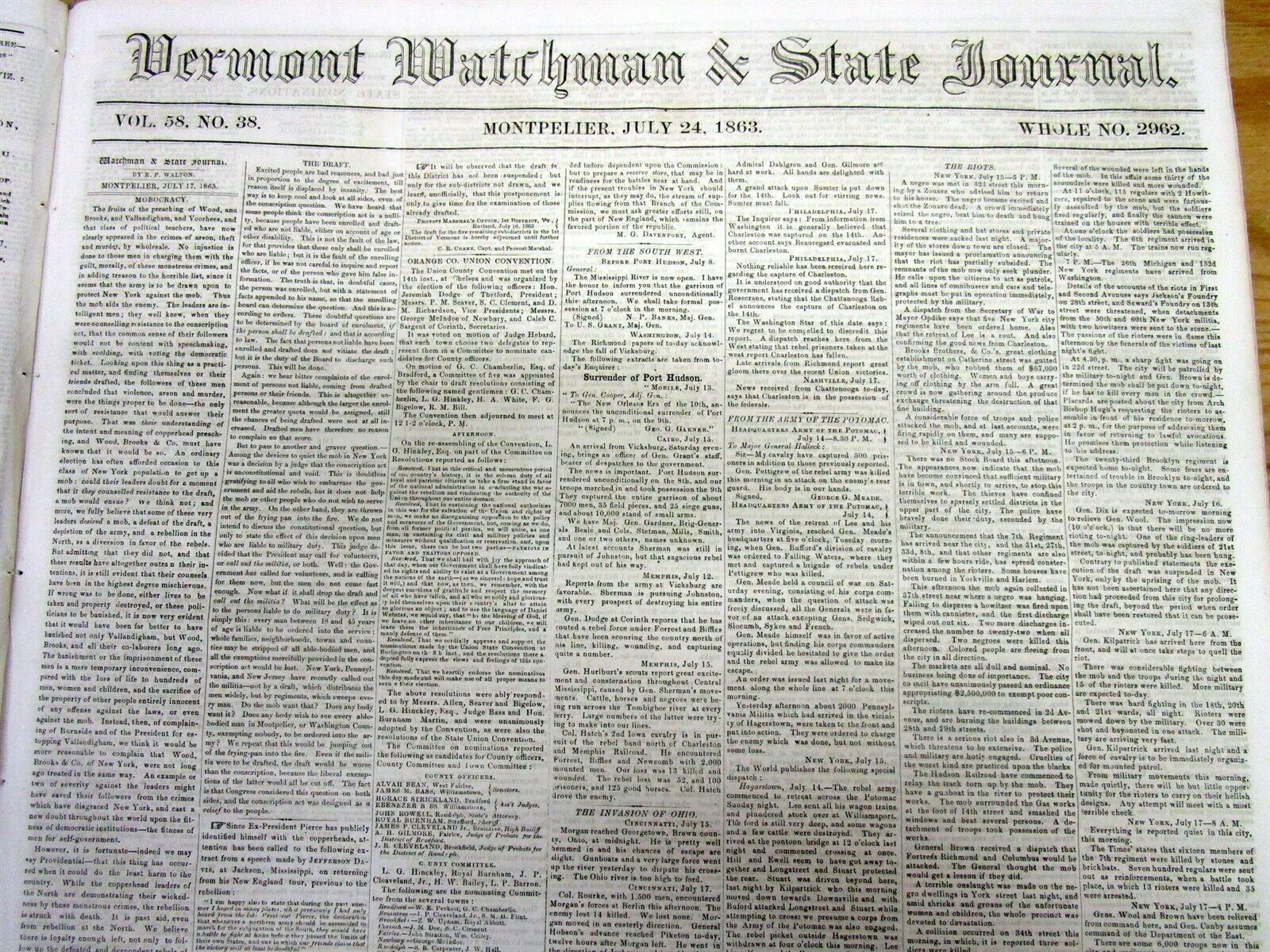-40%
1864 Civil War newspaper wth SHERMAN MARCH thru GEORGIA from Atlanta to Savannah
$ 21.12
- Description
- Size Guide
Description
1864 Civil War newspaper wth SHERMAN MARCH thru GEORGIA from Atlanta to Savannah1864 Civil War newspaper with SHERMAN 's MARCH thru GEORGIA from Atlanta to the sea (Savannah)
- inv # 6I-234
Please visit our
EBAY STORE
for THOUSANDS MORE HISTORICAL NEWSPAPERS for SALE or at auction
SEE PHOTO(s) - COMPLETE ORIGINAL illustrated NEWSPAPER,
Harper's Weekly
(NY, NY) dated Dec 10, 1864. This original illustrated newspaper contains an inside, double page engraving of SHERMAN'S MARCH THROUGH GEORGIA and a front page engraving of the result of Sherman's March through Georgia. There is also descriptive text of
SHERMAN'S MARCH THROUGH GEORGIA
.
From November 15 until December 21, 1864, Union General William T. Sherman led some 60,000 soldiers on a 285-mile march from Atlanta to Savannah, Georgia. The purpose of Sherman’s March to the Sea was to frighten Georgia’s civilian population into abandoning the Confederate cause. Sherman’s soldiers did not destroy any of the towns in their path, but they stole food and livestock and burned the houses and barns of people who tried to fight back. The Yankees were “not only fighting hostile armies, but a hostile people,” Sherman explained; as a result, they needed to “make old and young, rich and poor, feel the hard hand of war.”
General Sherman’s troops captured Atlanta on September 2, 1864. This was an important triumph, because Atlanta was a railroad hub and the industrial center of the Confederacy: It had munitions factories, foundries and warehouses that kept the Confederate army supplied with food, weapons and other goods. It stood between the Union Army and two of its most prized targets: the Gulf of Mexico to the west and Charleston to the East. It was also a symbol of Confederate pride and strength, and its fall made even the most loyal Southerners doubt that they could win the war. (“Since Atlanta,” South Carolinian Mary Boykin Chestnut wrote in her diary, “I have felt as if…we are going to be wiped off the earth.”)
After they lost Atlanta, the Confederate army headed west into Tennessee and Alabama, attacking Union supply lines as they went. Sherman was reluctant to set off on a wild goose chase across the South, however, and so he split his troops into two groups. Major General George Thomas took some 60,000 men to meet the Confederates in Nashville, while Sherman took the remaining 62,000 on an offensive march through Georgia to Savannah, “smashing things” (he wrote) “ to the sea.”
Sherman believed that the Confederacy derived its strength not from its fighting forces but from the material and moral support of sympathetic Southern whites. Factories, farms and railroads provided Confederate troops with the things they needed, he reasoned; and if he could destroy those things, the Confederate war effort would collapse. Meanwhile, his troops could undermine Southern morale by making life so unpleasant for Georgia’s civilians that they would demand an end to the war.
To that end, Sherman’s troops marched south toward Savannah in two wings, about 30 miles apart. On November 22, 3,500 Confederate cavalry started a skirmish with the Union soldiers at Griswoldville, but that ended so badly–650 Confederate soldiers were killed or wounded, compared to 62 Yankee casualties–that Southern troops initiated no more battles. Instead, they fled South ahead of Sherman’s troops, wreaking their own havoc as they went: They wrecked bridges, chopped down trees and burned barns filled with provisions before the Union army could reach them.
The Union soldiers were just as unsparing. They raided farms and plantations, stealing and slaughtering cows, chickens, turkeys, sheep and hogs and taking as much other food–especially bread and potatoes–as they could carry. (These groups of foraging soldiers were nicknamed “bummers,” and they burned whatever they could not carry.) The marauding Yankees needed the supplies, but they also wanted to teach Georgians a lesson: “it isn’t so sweet to secede,” one soldier wrote in a letter home, “as [they] thought it would be.”
Sherman’s troops arrived in Savannah on December 21, 1864, about three weeks after they left Atlanta. The city was undefended when they got there. (The 10,000 Confederates who were supposed to be guarding it had already fled.) Sherman presented the city of Savannah and its 25,000 bales of cotton to President Lincoln as a Christmas gift.Early in 1865, Sherman and his men left Savannah and pillaged and burned their way through South Carolina to Charleston. In April, the Confederacy surrendered and the war was over.
Sherman’s “total war” in Georgia was brutal and destructive, but it did just what it was supposed to do: it hurt Southern morale, made it impossible for the Confederates to fight at full capacity and likely hastened the end of the war. “This Union and its Government must be sustained, at any and every cost,” explained one of Sherman’s subordinates. “To sustain it, we must war upon and destroy the organized rebel forces,–must cut off their supplies, destroy their communications…and produce among the people of Georgia a thorough conviction of the personal misery which attends war, and the utter helplessness and inability of their ‘rulers’ to protect them…If that terror and grief and even want shall help to paralyze their husbands and fathers who are fighting us…it is mercy in the end.”
The newspaper usually contained 8 pages of text and 8 pages of gorgeous woodcut engravings, highly prized today for their detailed contemporary illustrations of events and places. The engravings are generally in 3 sizes: double page (DP - 21" X 16"), Full page (FP- 16" x 11") , and half page (HP- 10" x 8").
Very good condition. This listing includes the complete entire original illustrated newspaper, NOT just a clipping or a page of it. STEPHEN A. GOLDMAN HISTORICAL NEWSPAPERS stands behind all of the items that we sell with a no questions asked, money back guarantee. Every item we sell is an original newspaper printed on the date indicated at the beginning of its description. U.S. buyers pay priority mail postage which includes waterproof plastic and a heavy cardboard flat to protect the purchased item from damage in the mail. Upon request by the buyer, we can ship by USPS Media Mail to reduce postage cost; however, please be aware that USPS Media Mail can be very slow in its time of transit to the buyer. International postage is quoted when we are informed as to where the package is to be sent. We do combine postage (to reduce postage costs) for multiple purchases sent in the same package.
We list thousands of rare newspapers with dates from 1570 through 2004 on Ebay each week. This is truly SIX CENTURIES OF HISTORY that YOU CAN OWN!
Stephen A. Goldman Historical Newspapers has been in the business of buying and selling historical newspapers for over 50 years. Dr. Goldman is a consultant to the Freedom Forum Newseum and a member of the American Antiquarian Society. You can buy with confidence from us, knowing that we stand behind all of our historical items with a 100% money back guarantee. Let our 50+ years of experience work for YOU ! We have hundreds of thousands of historical newspapers (and their very early precursors) for sale.
Stephen A. Goldman Historical Newspapers
has been in the business of buying and selling historical newspapers for over 50 years. We are located in the charming Maryland Eastern Shore town of OXFORD, Maryland.
Dr. Goldman is a consultant to the Freedom Forum Newseum and a member of the American Antiquarian Society. You can buy with confidence from us, knowing that we stand behind all of our historical items with a 100% money back guarantee. Let our 50+ years of experience work for YOU ! We have hundreds of thousands of historical newspapers (and their very early precursors) for sale.
We invite customer requests for historical newspapers that are not yet located in our extensive Ebay listing of items. With an inventory of nearly a million historical newspapers (and their early precursors) we are likely have just the one
YOU
are searching for.
WE ARE ALSO ACTIVE BUYERS OF HISTORICAL NEWSPAPERS, including large and small personal collections, bound volumes, significant individual issues, or deaccessions from libraries and historical societies. IF YOU WANT TO SELL, WE WANT TO BUY !!!
Powered by SixBit's eCommerce Solution
